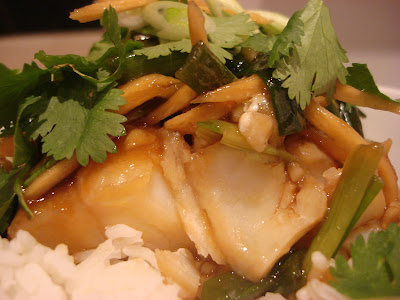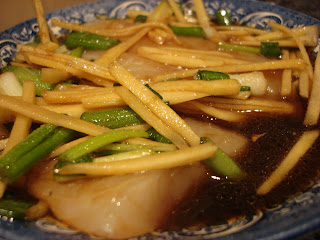If someone told me that I could only eat one dish for the rest of my life it would be this, because every time I eat it is different I discover another flavour nook that I never noticed before. I suppose it is the thai equivilent to our fast food which would be our burger vans, that does embaress me somewhat because a Phat Thai is an art form, one that a hawker could spend their lives learning.
I spent nearly four months of my travels in Thailand, the reason I was able to spend such a long amount of time there was because it was so unbelievably cheap, the food was always delicious yet insanely reasonable and the rooms where always no more than five pounds.
I loved the food in Thailand, it is everything that food should be, sweet, salty, sour, spicy, and aromatic. The philosophy behind the eating culture in Thailand is not how us westerners would approach dining, their is no set time to eat, you eat when you are hungry, it is very rare that people will sit down to a family dinner in their homes like most Westerners will do, instead they will go out to eat in open air food markets and the food is provided by Hawkers who specialise in one dish and one dish only, they will cook that dish their whole life until they perfect it. As a backpacker Phat Thai is the perfect dish, it is filling, yet cheap and packs a serious flavour punch. During my stay in Thailand I seldom ate in restaurants, I would usually find a hawker and a step to park my bottom and enjoy my food.
Phat Thai as it is known in Thailand or Pad Thai in the UK is stir fried noodles with tamarind, peanuts, fish sauce, sugar, the list goes on, but the one thing that I love the most about Phat Thai and most thai food in general that it is customisable to each individuals taste buds, for instance in the UK and most of the western world, condiments served with food are usually salt and pepper, that is it, whereas in Thailand you have dried powdered chilli, sugar, fish sauce with lime juice and birds eye chillies and usually a white vinegar that has chillies soaked into them the list goes on, this is why no two Phat Thai ever taste the same, they differ from one day to the next depending on your mood. Some of the best ever Phat Thai I have had have been along Khao san Rd in Bangkok, the women never wash their skillet, they merely wipe it, I presume that locks in all the flavour.
You will need:
125g of thin rice stick noodles commonly used in Vietnamese pho
75g of thinly sliced shallots
1 1/2 tbsp of white sugar
1 tbsp of tamarind sauce
50g of finely chopped garlic
2 tbsp of vegetable oil
50g of crushed salted peanuts
 50g of julienned carrot (finely sliced)
50g of julienned carrot (finely sliced)
50g of chinese chives cut into inch log pieces
2 tbsp of fish sauce
1 tsp of maldon salt
10 large kingprawns
2 eggs
a large handful of bean sprouts
Firstly place the noodles in a bowl and pour boiling water over them until they are submerged, then leave until they soften. Place the chopped garlic into a small bowl and pour the oil over it, this is how I remember all the hawkers having their garlic. In another bowl mix the salt, fish sauce, sugar and tamarind into a bowl ready for cooking.
In a large frying pan or skillet heat the garlic and oil for a minute, add the shallots followed by the soaked and drained noodles and the prawns, when the noodles are slicked with the garlic and the prawns are starting to turn pink push all of the noodles to one side if the pan, in the other side of the pan crack two eggs into it and stir vigorously until you have scrambled eggs, then toss the eggs and noodles together.

Pour the tamarind mixture over the noodles and toss well, add the chinese chives and julienned carrot and cook for a further minute before removing from the heat and putting onto a plate. Place the bean sprouts on top of the noodles and serve with the crushed peanuts, sugar, wedges of lime and dried chilli powder on the side. Scatter a few Sweet basil leaves for an extra special taste
Phat Thai as it is known in Thailand or Pad Thai in the UK is stir fried noodles with tamarind, peanuts, fish sauce, sugar, the list goes on, but the one thing that I love the most about Phat Thai and most thai food in general that it is customisable to each individuals taste buds, for instance in the UK and most of the western world, condiments served with food are usually salt and pepper, that is it, whereas in Thailand you have dried powdered chilli, sugar, fish sauce with lime juice and birds eye chillies and usually a white vinegar that has chillies soaked into them the list goes on, this is why no two Phat Thai ever taste the same, they differ from one day to the next depending on your mood. Some of the best ever Phat Thai I have had have been along Khao san Rd in Bangkok, the women never wash their skillet, they merely wipe it, I presume that locks in all the flavour.
You will need:
125g of thin rice stick noodles commonly used in Vietnamese pho
75g of thinly sliced shallots
1 1/2 tbsp of white sugar
1 tbsp of tamarind sauce
50g of finely chopped garlic
2 tbsp of vegetable oil
50g of crushed salted peanuts
 50g of julienned carrot (finely sliced)
50g of julienned carrot (finely sliced)50g of chinese chives cut into inch log pieces
2 tbsp of fish sauce
1 tsp of maldon salt
10 large kingprawns
2 eggs
a large handful of bean sprouts
Firstly place the noodles in a bowl and pour boiling water over them until they are submerged, then leave until they soften. Place the chopped garlic into a small bowl and pour the oil over it, this is how I remember all the hawkers having their garlic. In another bowl mix the salt, fish sauce, sugar and tamarind into a bowl ready for cooking.
In a large frying pan or skillet heat the garlic and oil for a minute, add the shallots followed by the soaked and drained noodles and the prawns, when the noodles are slicked with the garlic and the prawns are starting to turn pink push all of the noodles to one side if the pan, in the other side of the pan crack two eggs into it and stir vigorously until you have scrambled eggs, then toss the eggs and noodles together.

Pour the tamarind mixture over the noodles and toss well, add the chinese chives and julienned carrot and cook for a further minute before removing from the heat and putting onto a plate. Place the bean sprouts on top of the noodles and serve with the crushed peanuts, sugar, wedges of lime and dried chilli powder on the side. Scatter a few Sweet basil leaves for an extra special taste























































